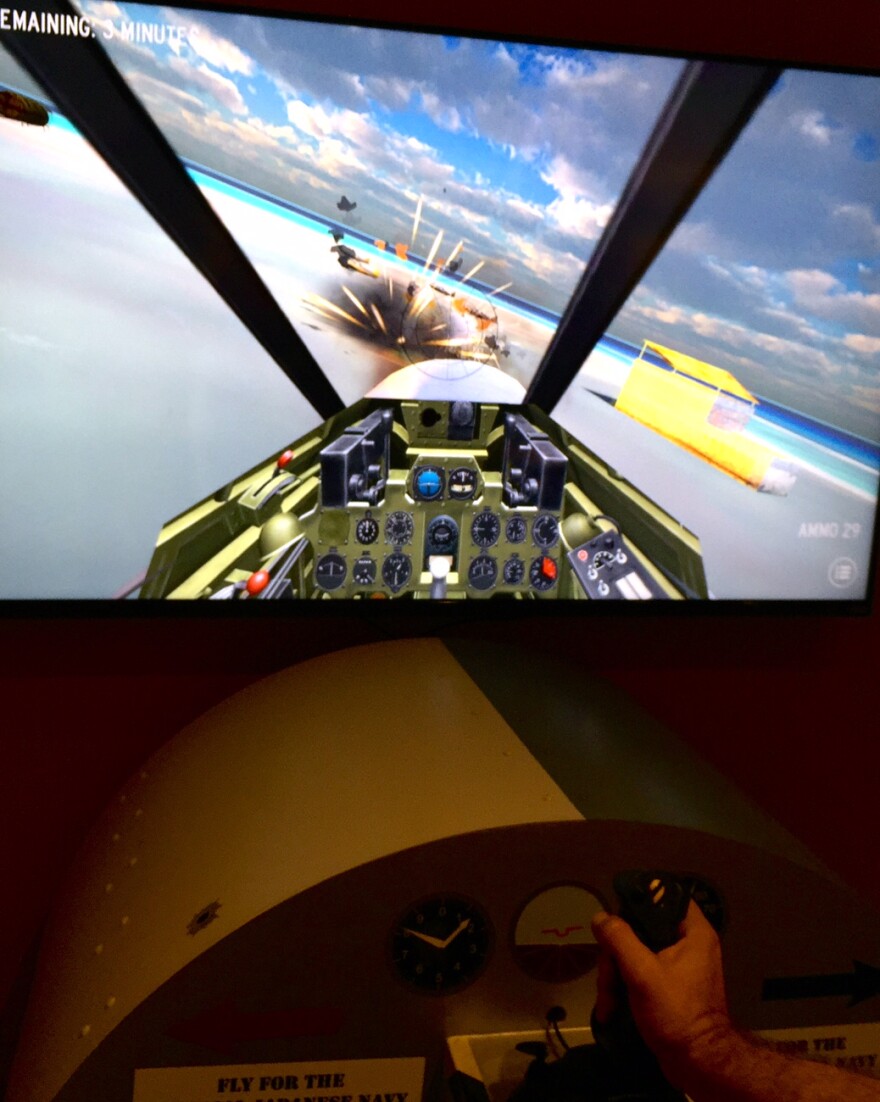
President Obama is coming to the world conservation congress in Honolulu to herald the creation of the world's largest ecologically protected area, Papahanaumokuakea. The northwestern sweep of Hawai’i’s archipelago is a treasure for biologists, marine scientists, archaeologists, cultural practitioners, naval historians, and others. HPR’s Noe Tanigawa reports mysterious stone figures are among the items featured in a new exhibit at the Bishop Museum.
“Journeys: Heritage of the Northwestern Hawaiian Islands,” continues at the Bishop Museum through January 29. Find images and links at hawaiipublicradio.org .
http://www.bishopmuseum.org/journeys/
Dr. Kekuewa Kikloi has been studying the Northwest Hawaiian islands for the past 16 years. It started with his first trip there as an undergraduate at the Center for Hawaiian Studies.

“It felt like going back in time in a way…The first thing I said was, I feel like I’m going back in the Kumulipo for some reason. That’s what made me think about this, was the Kumulipo just a historical thing, or is it a spatial thing as well? More layers of complexity in it than we realize, right?”
Wow, the vivacity of life in the Kumulipo was right before your eyes.
“Native Hawaiians have been going up there at least from about 1300 AD. I really think their main motivations were religious, and that Mokumanamana was one particular site they were trying to maintain, like us trying to maintain a satellite station on the moon right now.”
Mokumanamana is about 460 miles northwest of Honolulu, that’s a day and a half or two by canoe. Forty six acres, it has 52 documented cultural sites, including numerous shrines along the island’s central ridge. No fresh water, no trees, the rocky outcrop is continually buffeted by wind.
“One of the main interesting things about Mokumanamana is that it lies directly on the Tropic of Cancer, called “Ke ala nui polohiwa a Kane.”
That literally means, "The Dark Shining Path of Kane," a metaphor for the path to the afterlife. Kikiloi’s

research indicates Mokumanamana, which lies directly below the sun on the summer solstice, was seen as the origin point for mankind and possibly the gateway to the afterlife. That explains the many heiau, the continual occupation despite scarce resources, and the creation of very unique stone images.
“I think they were going there year round and constantly going back and forth and re-provisioning people on that island because when we look at the radio carbon dates and the coral dates from these sites, it shows a continual sequence from 1300 all the way to 1800. They were going there a lot. There was no break in the occupation of the island, which is amazing because it’s very far. We have a hard time keeping people on those islands for conservation.” How those of the past managed to obtain fresh water is one of the greatest puzzles, as there is no water source on the island. The wealth of heiau and the determination to keep a presence are indications of Mokumanamana's importance. The discovery of unique stone images there only augments the mystery.
“Yes, for me the images are by far the most incredible thing. I think Hawaiian culture is more diverse than we realize.”
The “Journeys” exhibition now at Bishop Museum is our opportunity to see stone figures attributed to Hawaiians that don’t look at all like the wooden images we are accustomed to. Less than 18 inches high, with hunched shoulders, their arms are cut free from the body, a difficult task. Legs are also separated, with modest male genitalia. The faces, though are not at all like the wooden statues and figures we associate with Hawai'i. Dr. Kikiloi says we've been conditioned by ashtrays, mugs, and candy boxes to think Hawaiian iconography is a set thing, when in fact, it may be more diverse. Still, it's surprising, the almost modernist simplicity of the round eyes, slender nose, and almost a smile!
“There’s overwhelming evidence these images are Hawaiian.” Where else in Hawai‘i is there anything like this? Nowhere. But Kikiloi says “I think it just points to the fact these are more significant than we probably realize.”

Michael Wilson is Exhibit Designer for the Bishop Museum: “The Northwest Hawaiian islands have coral reefs that are deeper than any other place in the world. The Northwest Hawaiian islands has a higher percentage of endemic species than anywhere else in the world. In some places Richard Pyle (Museum ichthyologist) has studied, a hundred percent of the species there are endemic."
"On top of that, there’s this really unusual thing where up to 50% of the biomass, the weight of the fish, are apex predators. They don’t understand how that’s possible, how that happens, why it happens exactly. That whole place is a fascinating place of mystery in a sense, there are a lot of unanswered questions and there’s a lot of knowledge to be found from there. As part of this IUCN, Richard Pyle will be naming two new species of fish never before seen. He’s just constantly finding species of fish out there, and that’s just one person, one researcher.”
With the area of the Papah?naumoku?kea Marine National Monument now quadrupled, its marvels and mysteries may live to thrill future generations.




